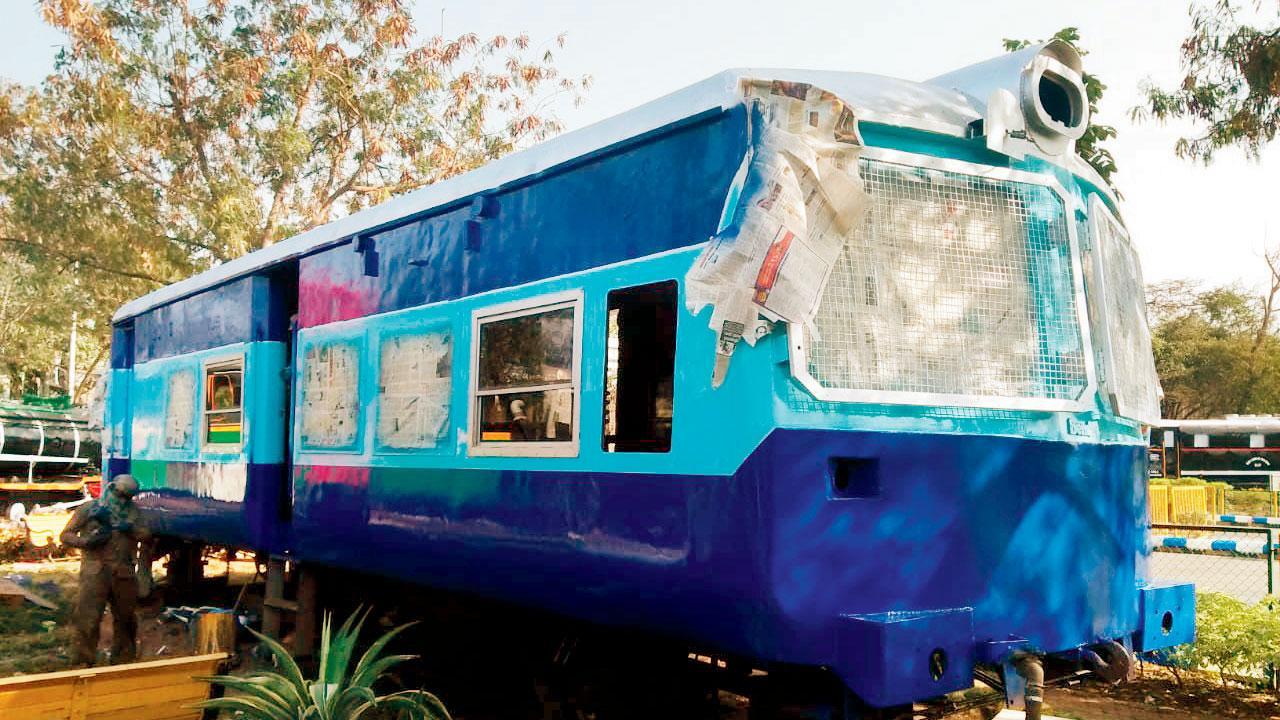New arrivals include a 66-year-old engine that used to run on the Neral-Matheran line, a rare rail bus from Buldhana and an engine from Akola

The aircraft blue diesel-run rail bus was a regular feature on the 12-km Jalambh-Khamgaon section of Buldhana district.
A rare rail bus from Buldhana, a 66-year-old diesel loco from Matheran and a 40-year-old engine from Murtijapur in Akola district arrived at the Mumbai CSMT railway heritage open gallery on February 27. The railway relics will soon be placed for public viewing for free opposite platform 18 at the station where a heritage museum is coming up.
ADVERTISEMENT
The Murtijapur locomotive of ZDM4A class diesel numbered 212
The aircraft blue diesel-run rail bus of WRB1 class which could accommodate 76 passengers was a regular feature on the 12-km Jalambh-Khamgaon section of Buldhana district. Manufactured by Bharat Earth Movers Limited, it had been shifted to Central Railway's Parel workshop for an overhaul.
“Spotting a rail bus is always a rare thing for Mumbaikars and there cannot be a better place than the Mumbai CSMT headquarters for display of this rail bus that has served for over a decade,” a railway engineer said. The Murtijapur locomotive of ZDM4A class diesel numbered 212 of 2-foot-6-inch gauge was built in 1975. The engine will be refurbished and painted in its original colour.
This NDM1-class, made-in-Germany engine used to run on the Matheran route
The third locomotive had a closer connection with Mumbai. It is a blue-yellow 2-foot gauge, NDM1-class locomotive made by Arnold Jung Gmbh, Germany. Now 66 years old, this 700-HP engine used to run on the popular narrow gauge Neral-Matheran Hill Railway. The German engine was rebuilt at the Parel workshop in 2002.
Food on wheels
Opened in 2018, the open-air museum at CSMT is also set to get a 'Restaurant on Wheels’ made out of an old, refurbished rail coach for R28 lakh.The heritage gully has rare artefacts, including a 1928 vintage narrow gauge steam locomotive that used to run on the Kurduwadi-Latur Barsi Light Railway, one ofIndia’s first electric locos named Sir Leslie Wilson and a WCG-2 class electric loco manufactured by Chittaranjan Locomotive Works that ran on 1500V DC power. Among the other attractions are a heritage wagon manufactured by the Birmingham Railway Carriage and Wagon Company, England, in 1920, a printing press, an old stone crusher, and a fire engine made in 1880, which was operated manually by a team of eight to 12 men and a steam crane.
1975
Year of manufacture of the Murtijapur loco
 Subscribe today by clicking the link and stay updated with the latest news!" Click here!
Subscribe today by clicking the link and stay updated with the latest news!" Click here!






